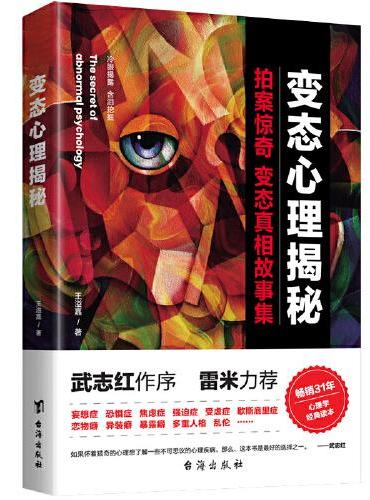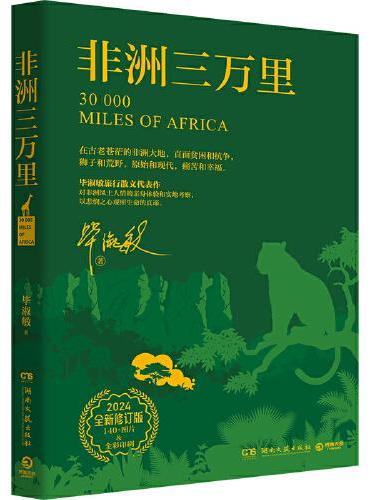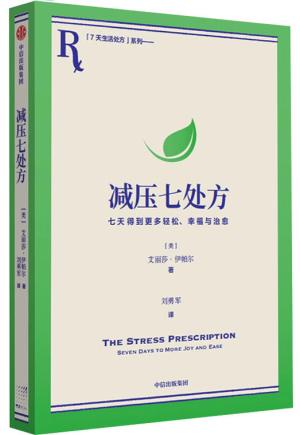新書推薦:

《
背影2
》
售價:NT$
386.0

《
她的罪名
》
售價:NT$
279.0

《
巨变与突围:碰撞中的清帝国:1644—1840
》
售價:NT$
437.0

《
变态心理揭秘
》
售價:NT$
279.0

《
非洲三万里(2024版)
》
售價:NT$
381.0

《
不思而美:一个人的心灵简史
》
售價:NT$
325.0

《
减压七处方
》
售價:NT$
314.0

《
成为作家
》
售價:NT$
269.0
|
| 編輯推薦: |
|
玻色爱因斯坦凝聚是神奇而富有魅力的物理现象。相关研究已经使多位科学家获得了诺贝尔奖。目前。关于冷原子的研究正蓬勃展开,玻色爱因斯坦凝聚正是其理论基础。本书对于相关领域的研究人员来说是不可错过的佳作。
|
| 內容簡介: |
|
《玻色-爱因斯坦凝聚的基础与前沿》首先介绍了玻色-爱因斯坦凝聚(BEC)的基本理论。之后,本书讨论了快速旋转BEC,旋量和偶极BEC,低维BEC等近来发展迅速的方向。本书还介绍了平衡或非平衡费米液体超流,包括BCS-BEC交叉、幺正气体、p波超流等。本书适合本领域的研究者和研究生阅读。
|
| 目錄:
|
Preface v
1. Fundamentals of Bose-Einstein Condensation 1
1.1 Indistinguishability of Identical Particles . . . . . . . . . . 1
1.2 Ideal Bose Gas in a Uniform System . . . . . . . . . . . . 3
1.3 Off-Diagonal Long-Range Order: Bose System . . . . . . 6
1.4 Off-Diagonal Long-Range Order: Fermi System . . . . . . 10
1.5 U1Gauge Symmetry . . . . . . . . . . . . . . . . . . . . 11
1.6 Ground-State Wave Function of a Bose System . . . . . . 13
1.7 BEC and Superfluidity . . . . . . . . . . . . . . . . . . . . 15
1.8 Two-FluidModel . . . . . . . . . . . . . . . . . . . . . . . 20
1.9 Fragmented Condensate . . . . . . . . . . . . . . . . . . . 23
1.9.1 Two-statemodel . . . . . . . . . . . . . . . . . . . 23
1.9.2 Degenerate double-well model . . . . . . . . . . . 25
1.9.3 Spin-1 antiferromagnetic BEC . . . . . . . . . . . 27
1.10 Interference Between Independent Condensates . . . . . . 28
1.11 Feshbach Resonance . . . . . . . . . . . . . . . . . . . . . 31
2. Weakly Interacting Bose Gas 33
2.1 Interactions Between Neutral Atoms . . . . . . . . . . . . 33
2.2 Pseudo-PotentialMethod . . . . . . . . . . . . . . . . . . 36
2.3 Bogoliubov Theory . . . . . . . . . . . . . . . . . . . . . . 40
2.3.1 Bogoliubov transformations . . . . . . . . . . . . . 40
2.3.2 Bogoliubov ground state . . . . . . . . . . . . . . 45
2.3.3 Low-lying excitations and condensate fraction . . 48
2.3.4 Properties of Bogoliubov ground state . . . . . . . 50
2.4 Bogoliubov Theory of Quasi-One-Dimensional Torus . . . 54
2.4.1 Case of BEC at rest: stability of BEC . . . . . . . 55
2.4.2 Case of rotating BEC: Landau criterion . . . . . . 56
2.4.3 Ground state of BEC in rotating torus . . . . . . 59
2.5 Bogoliubov-deGennes BdG Theory . . . . . . . . . . . 60
2.6 Method of Binary Collision Expansion . . . . . . . . . . . 65
2.6.1 Equation of state . . . . . . . . . . . . . . . . . . 65
2.6.2 Cluster expansion of partition function . . . . . . 66
2.6.3 Ideal Bose and Fermi gases . . . . . . . . . . . . . 67
2.6.4 Matsubara formula . . . . . . . . . . . . . . . . . 69
3. Trapped Systems 73
3.1 Ideal Bose Gas in a Harmonic Potential . . . . . . . . . . 73
3.1.1 Transition temperature . . . . . . . . . . . . . . . 75
3.1.2 Condensate fraction . . . . . . . . . . . . . . . . . 76
3.1.3 Chemical potential . . . . . . . . . . . . . . . . . 77
3.1.4 Specific heat . . . . . . . . . . . . . . . . . . . . . 77
3.2 BEC in One- and Two-Dimensional Parabolic Potentials . 79
3.2.1 Density of states . . . . . . . . . . . . . . . . . . . 79
3.2.2 Transition temperature . . . . . . . . . . . . . . . 79
3.2.3 Condensate fraction . . . . . . . . . . . . . . . . . 80
3.3 Semiclassical Distribution Function . . . . . . . . . . . . . 81
3.4 Gross-Pitaevskii Equation . . . . . . . . . . . . . . . . . . 83
3.5 Thomas-Fermi Approximation . . . . . . . . . . . . . . . 84
3.6 Collective Modes in the Thomas-Fermi Regime . . . . . . 88
3.6.1 Isotropic harmonic potential . . . . . . . . . . . . 89
3.6.2 Axisymmetric trap . . . . . . . . . . . . . . . . . 91
3.6.3 Scissorsmode . . . . . . . . . . . . . . . . . . . . 92
3.7 VariationalMethod . . . . . . . . . . . . . . . . . . . . . . 93
3.7.1 Gaussian variational wave function . . . . . . . . 94
3.7.2 Collectivemodes . . . . . . . . . . . . . . . . . . . 96
3.8 Attractive Bose-Einstein Condensate . . . . . . . . . . . . 98
3.8.1 Collectivemodes . . . . . . . . . . . . . . . . . . . 99
3.8.2 Collapsing dynamics of an attractive condensate . 102
4. Linear Response and Sum Rules 105
4.1 Linear Response Theory . . . . . . . . . . . . . . . . . . . 105
4.1.1 Linear response of density fluctuations . . . . . . 105
4.1.2 Retarded response function . . . . . . . . . . . . . 108
4.2 Sum Rules . . . . . . . . . . . . . . . . . . . . . . . . . . . 109
4.2.1 Longitudinal f-sumrule . . . . . . . . . . . . . . 110
4.2.2 Compressibility sum rule . . . . . . . . . . . . . . 112
4.2.3 Zero energy gap theorem . . . . . . . . . . . . . . 114
4.2.4 Josephson sum rule . . . . . . . . . . . . . . . . . 115
4.3 Sum-Rule Approach to CollectiveModes . . . . . . . . . . 120
4.3.1 Excitation operators . . . . . . . . . . . . . . . . . 121
4.3.2 Virial theorem . . . . . . . . . . . . . . . . . . . . 122
4.3.3 Kohn theorem . . . . . . . . . . . . . . . . . . . . 123
4.3.4 Isotropic trap . . . . . . . . . . . . . . . . . . . . 124
4.3.5 Axisymmetric trap . . . . . . . . . . . . . . . . . 127
5. Statistical Mechanics of Superfluid Systems in a Moving Frame 129
5.1 Transformation toMoving Frames . . . . . . . . . . . . . 129
5.2 Elementary Excitations of a Superfluid . . . . . . . . . . . 131
5.3 Landau Criterion . . . . . . . . . . . . . . . . . . . . . . . 133
5.4 Correlation Functions at Thermal Equilibrium . . . . . . 134
5.5 Normal Fluid Density . . . . . . . . . . . . . . . . . . . . 136
5.6 Low-Lying Excitations of a Superfluid . . . . . . . . . . . 140
5.7 Examples . . . . . . . . . . . . . . . . . . . . . . . . . . . 141
5.7.1 Ideal Bose gas . . . . . . . . . . . . . . . . . . . . 141
5.7.2 Weakly interacting Bose gas . . . . . . . . . . . . 143
6. Spinor Bose-Einstein Condensate 145
6.1 Internal Degrees of Freedom . . . . . . . . . . . . . . . . . 145
6.2 General Hamiltonian of Spinor Condensates . . . . . . . . 146
6.3 Spin-1 BEC . . . . . . . . . . . . . . . . . . . . . . . . . . 151
6.3.1 Mean-field theory of a spin-1 BEC . . . . . . . . . 153
6.3.2 Many-body states in single-mode approximation . 157
6.3.3 Superflow, spin texture, and Berry phase . . . . . 161
6.4 Spin-2 BEC . . . . . . . . . . . . . . . . . . . . . . . . . . 163
7. Vortices 171
7.1 Hydrodynamic Theory of Vortices . . . . . . . . . . . . . 171
7.2 Quantized Vortices . . . . . . . . . . . . . . . . . . . . . . 174
7.3 Interaction Between Vortices . . . . . . . . . . . . . . . . 180
7.4 Vortex Lattice . . . . . . . . . . . . . . . . . . . . . . . . 181
7.4.1 Dynamics of vortex nucleation . . . . . . . . . . . 181
7.4.2 Collective modes of a vortex lattice . . . . . . . . 183
7.5 FractionalVortices . . . . . . . . . . . . . . . . . . . . . . 186
7.6 Spin Current . . . . . . . . . . . . . . . . . . . . . . . . . 187
7.7 Fast Rotating BECs . . . . . . . . . . . . . . . . . . . . . 189
7.7.1 Lowest Landau level approximation . . . . . . . . 189
7.7.2 Mean field quantum Hall regime . . . . . . . . . . 192
7.7.3 Many-body wave functions of a fast
rotating BEC . . . . . . . . . . . . . . . . . . . . 194
8. Fermionic Superfluidity 197
8.1 Ideal Fermi Gas . . . . . . . . . . . . . . . . . . . . . . . . 197
8.2 Fermi Liquid Theory . . . . . . . . . . . . . . . . . . . . . 200
8.3 Cooper Problem . . . . . . . . . . . . . . . . . . . . . . . 205
8.3.1 Two-body problem . . . . . . . . . . . . . . . . . 205
8.3.2 Many-body problem . . . . . . . . . . . . . . . . . 209
8.4 Bardeen-Cooper-Schrieffer BCS Theory . . . . . . . . . 211
8.5 BCS-BEC Crossover at T =0 . . . . . . . . . . . . . . . . 215
8.6 Superfluid Transition Temperature . . . . . . . . . . . . . 219
8.7 BCS-BEC Crossover at T _=0 . . . . . . . . . . . . . . . . 221
8.8 Gor''kov-Melik-Barkhudarov Correction . . . . . . . . . . 225
8.9 Unitary Gas . . . . . . . . . . . . . . . . . . . . . . . . . . 228
8.10 Imbalanced Fermi Systems . . . . . . . . . . . . . . . . . . 231
8.11 P-Wave Superfluid . . . . . . . . . . . . . . . . . . . . . . 234
8.11.1 Generalized pairing theory . . . . . . . . . . . . . 234
8.11.2 Spin-triplet p-wave states . . . . . . . . . . . . . . 238
9. Low-Dimensional Systems 241
9.1 Non-interacting Systems . . . . . . . . . . . . . . . . . . . 241
9.2 Hohenberg-Mermin-Wagner Theorem . . . . . . . . . . . 243
9.3 Two-Dimensional BEC at Absolute Zero . . . . . . . . . . 246
9.4 Berezinskii-Kosterlitz-Thouless Transition . . . . . . . . . 247
9.4.1 Universal jump . . . . . . . . . . . . . . . . . . . . 247
9.4.2 Quasi long-range order . . . . . . . . . . . . . . . 249
9.4.3 Renormalization-group analysis . . . . . . . . . . 250
9.5 Quasi One-Dimensional BEC . . . . . . . . . . . . . . . . 252
9.6 Tonks-Girardeau Gas . . . . . . . . . . . . . . . . . . . . 256
9.7 Lieb-LinigerModel . . . . . . . . . . . . . . . . . . . . . . 258
10. Dipolar Gases 261
10.1 Dipole-Dipole Interaction . . . . . . . . . . . . . . . . . . 261
10.1.1 Basic properties . . . . . . . . . . . . . . . . . . . 261
10.1.2 Order of magnitude and length scale . . . . . . . 263
10.1.3 D-wave nature . . . . . . . . . . . . . . . . . . . . 264
10.1.4 Tuning the dipole-dipole interaction . . . . . . . . 265
10.2 PolarizedDipolar BEC. . . . . . . . . . . . . . . . . . . . 266
10.2.1 Nonlocal Gross-Pitaevskii equation . . . . . . . . 266
10.2.2 Stability . . . . . . . . . . . . . . . . . . . . . . . 267
10.2.3 Thomas-Fermi limit . . . . . . . . . . . . . . . . . 269
10.2.4 Quasi two-dimensional systems . . . . . . . . . . . 271
10.3 Spinor-Dipolar BEC . . . . . . . . . . . . . . . . . . . . . 273
10.3.1 Einstein-de Haas effect . . . . . . . . . . . . . . . 274
10.3.2 Flux closure and ground-state circulation . . . . . 274
11. Optical Lattices 277
11.1 Optical Potential . . . . . . . . . . . . . . . . . . . . . . . 277
11.1.1 Optical trap . . . . . . . . . . . . . . . . . . . . . 277
11.1.2 Optical lattice . . . . . . . . . . . . . . . . . . . . 280
11.2 Band Structure . . . . . . . . . . . . . . . . . . . . . . . . 283
11.2.1 Bloch theorem . . . . . . . . . . . . . . . . . . . . 283
11.2.2 Brillouin zone . . . . . . . . . . . . . . . . . . . . 285
11.2.3 Bloch oscillations . . . . . . . . . . . . . . . . . . 286
11.2.4 Wannier function . . . . . . . . . . . . . . . . . . 287
11.3 Bose-Hubbard Model . . . . . . . . . . . . . . . . . . . . 288
11.3.1 Bose-Hubbard Hamiltonian . . . . . . . . . . . . 288
11.3.2 Superfluid-Mott-insulator transition . . . . . . . . 289
11.3.3 Phase diagram . . . . . . . . . . . . . . . . . . . . 291
11.3.4 Mean-field approximation . . . . . . . . . . . . . . 292
11.3.5 Supersolid . . . . . . . . . . . . . . . . . . . . . . 295
12. Topological Excitations 297
12.1 Homotopy Theory . . . . . . . . . . . . . . . . . . . . . . 297
12.1.1 Homotopic relation . . . . . . . . . . . . . . . . . 297
12.1.2 Fundamental group . . . . . . . . . . . . . . . . . 299
12.1.3 Higher homotopy groups . . . . . . . . . . . . . . 302
12.2 Order Parameter Manifold . . . . . . . . . . . . . . . . . . 303
12.2.1 Isotropy group . . . . . . . . . . . . . . . . . . . . 303
12.2.2 Spin-1 BEC . . . . . . . . . . . . . . . . . . . . . 304
12.2.3 Spin-2 BEC . . . . . . . . . . . . . . . . . . . . . 305
12.3 Classification of Defects . . . . . . . . . . . . . . . . . . . 306
12.3.1 Domains . . . . . . . . . . . . . . . . . . . . . . . 306
12.3.2 Line defects . . . . . . . . . . . . . . . . . . . . . 306
12.3.3 Point defects . . . . . . . . . . . . . . . . . . . . . 311
12.3.4 Skyrmions . . . . . . . . . . . . . . . . . . . . . . 313
12.3.5 Influence of different types of defects . . . . . . . 316
12.3.6 Topological charges . . . . . . . . . . . . . . . . . 318
Appendix A Order of Phase Transition, Clausius-Clapeyron
Formula, and Gibbs-Duhem Relation 321
Appendix B Bogoliubov Wave Functions in Coordinate Space 323
B.1 Ground-State Wave Function . . . . . . . . . . . 323
B.2 One-Phonon State . . . . . . . . . . . . . . . . . 327
Appendix C Effective Mass, Sound Velocity, and Spin
Susceptibility of Fermi Liquid 329
Appendix D Derivation of Eq. 8.155 333
Appendix E f -Sum Rule 335
Bibliography 337
Index 347
|
|










